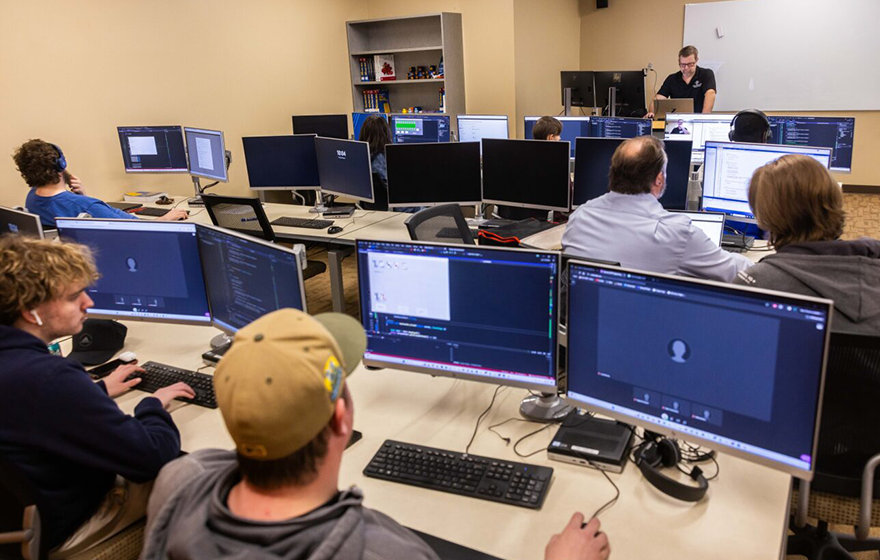The Benefits of a Dedicated Development Team in a Competitive Market
Wiki Article
Committed Developers vs. In-House Teams: Which Is Right for You?
The choice in between using specialized developers and preserving an in-house team is a substantial one that can influence the trajectory of your projects and overall service technique. Committed developers supply a level of adaptability and specialized experience that can be useful for particular, temporary campaigns. On the other hand, internal groups add to a natural company culture and a nuanced understanding of lasting objectives. By analyzing important variables such as budget, job range, and preferred control, you can much better figure out which method lines up with your organizational needs. The ramifications of this choice extend past instant end results-- consider the broader impact on your company landscape.Understanding Dedicated Designers
The growing demand for specialized skills in the tech market has brought about the development of devoted developers as a feasible solution for numerous companies. These professionals are commonly contracted on a task basis, allowing firms to take advantage of specific expertise without the long-lasting commitment related to permanent hires. Dedicated programmers are typically ingrained within a customer's group, providing adaptability and scalability to satisfy job needs.This model enables organizations to access an international talent pool, which is specifically beneficial in a quickly progressing technological landscape. Committed developers can be sourced from different geographical locations, making sure that business can discover the best ability established at affordable rates. They often bring a riches of experience and understanding, having functioned on diverse jobs throughout various markets.
Furthermore, committed designers can focus exclusively on the tasks at hand, enhancing performance and efficiency. They are outfitted to incorporate flawlessly right into existing workflows, working together very closely with in-house teams to accomplish job goals. This technique not only lowers the burden of employment and training yet also allows organizations to remain agile, adjusting swiftly to changing market needs and technological improvements.
Benefits of In-House Teams

In addition, internal groups have a tendency to have a much deeper understanding of the business's goal, values, and goals. This alignment can enhance worker interaction and motivation, as employee feel a lot more attached to their job and the company's success. In addition, having a specialized internal team permits better positioning of approaches and goals, as these participants are continually concentrated on the company's top priorities.
Internal teams also promote quicker decision-making procedures, as they can respond more rapidly to difficulties and modifications. The well established partnerships and familiarity with company protocols enable streamlined process and minimized miscommunication. Inevitably, the mix of a cohesive culture, placement with organizational goals, and reliable interaction makes in-house groups a beneficial asset for lots of organizations, specifically those seeking to cultivate long-term growth and development.
Price Considerations
When assessing cost factors to consider, both internal groups and specialized developers existing distinct monetary ramifications for organizations. Engaging dedicated designers commonly includes a pay-per-project or per hour rate version, which can be economical for weblink companies with rising and fall task demands. This approach permits adaptability in scaling sources up or down, ensuring that firms just spend for the solutions they need.On the other hand, internal teams entail fixed costs, consisting of incomes, advantages, and overhead expenditures such as workplace room and tools. While this model provides greater control and instant schedule of resources, it may bring about higher long-lasting expenses, especially if the work does not warrant a permanent personnel.
Additionally, firms must consider the concealed prices related to employment and training of internal staff members, which can further strain budgets. In many cases, the time and resources invested in managing an internal group can diminish the company's core company objectives.

Job Monitoring and Adaptability
Task management and versatility are crucial aspects that affect the choice in between in-house groups and committed programmers. Dedicated groups usually have established processes for taking care of jobs efficiently, leveraging specific methods like Agile or Scrum, which promote repetitive progression and adaptability.
Eventually, the option in between dedicated programmers and internal groups pivots on the preferred degree of adaptability and the details job monitoring requirements. Companies should review their functional characteristics, task complexity, and source availability to establish which option lines up ideal with their critical goals.
Making the Right Selection
Picking the ideal advancement strategy-- committed programmers or in-house teams-- needs a mindful assessment of various aspects that line up with a company's critical goals. software development staff augmentation. First, think about the nature of the job. Devoted programmers may be much more suitable if click for more it requires specialized abilities or a quick scale-up. Alternatively, internal groups can give far better connection and assimilation with existing personnel.Following, evaluate your budget. Devoted programmers usually provide an affordable service for temporary tasks, while in-house teams might incur higher lasting expenses as a result of incomes, benefits, and overhead costs. Examine the level of control and partnership preferred; internal groups typically foster stronger interaction and positioning with firm culture.
Furthermore, take into consideration the time frame. If immediate outcomes are necessary, devoted programmers can be onboarded quickly, whereas constructing an in-house team requires time for recruitment and training. Consider the long-term vision of your organization. If constant development is essential, buying an internal group might yield far better returns over time. Eventually, the decision rests on a detailed evaluation of these aspects, making certain alignment with your company's functional demands and total purposes.
Verdict
In final thought, the choice in between internal groups and committed programmers hinges on job demands and business goals. Conversely, internal groups grow a cohesive society and deeper alignment with long-lasting goals.The choice in between utilizing devoted developers and maintaining an in-house group is a substantial one that can affect the trajectory of your tasks and general service method.Job monitoring and flexibility are essential aspects that affect the choice between internal groups and dedicated programmers. software engineering staffing.In contrast, internal groups might excel in maintaining a constant project monitoring structure due to their familiarity with the organization's society and long-lasting goals. Dedicated designers usually provide an affordable service for short-term projects, while internal teams may sustain greater long-lasting costs due to salaries, advantages, and overhead expenses.In verdict, the choice in between committed designers and internal groups pivots on job requirements and business objectives
Report this wiki page